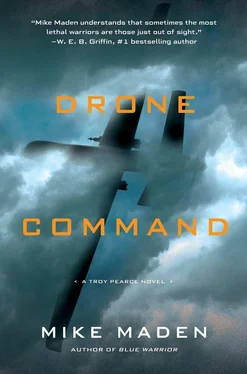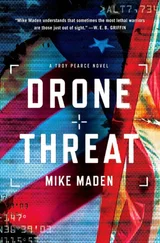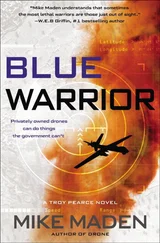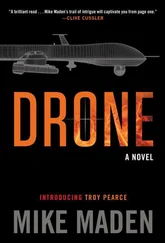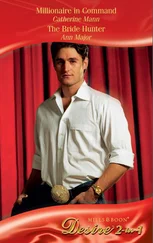The small skiff trailed on the water behind them, keeping its distance. The driver fished out the first crewman who had been tossed off the dive boat when the ships collided. The two of them barely managed to haul up the furious captain, who was cursing the Chinese despite his broken jaw after he had been thrown overboard like a bag of garbage.
Through it all, the excited cameraman never wavered. He caught everything on his Sony digicam, filling up the flash drive, eager to upload the savage imagery on the Internet as soon as he got to shore.
THE PENTAGON
ARLINGTON COUNTY, VIRGINIA
7 MAY 2017
It was Lane’s first trip to the Pentagon as president.
Hell, his first trip ever.
The enormous five-sided structure was synonymous with American military power. In reality, the seven-story building was 3.7 million square feet of office space connected by seventeen and a half miles of corridors. Its most important occupant was a civilian bureaucrat, the secretary of defense, who ran the federal government’s oldest and largest bureaucracy, and the country’s single largest employer, with more than two million active-duty and civilian personnel.
Big bureaucracy, big office building.
The most important room in the Pentagon office complex was the Joint Chiefs of Staff (JCS) conference room, long known as the Tank, located on corridor nine in the outermost E ring on the second floor (which is really the main floor) near the river entrance.
The legendary Tank was where the highest ranking flag officers of the U.S. armed services hashed out the most important security issues of the day.
Today was unlike most days in the Tank. In a symbolic gesture, President Lane left the White House and crossed the Potomac in order to meet with the chairman of the JCS and the other service chiefs.
Ironically, despite their supreme military ranks, none of the service chiefs had any operational authority, including the chairman of the JCS. Only the president and, by extension, the secretary of defense, could order troops, ships, and planes into battle. Civilian control of the military was a central tenet of Western liberal democracies. Militaries were by their nature antidemocratic and, presumably, a threat to democratic institutions if left unchecked. Democracies were also peaceful.
Or so the theory went.
In reality, the DoD and the respective military branches were far more risk averse than their elected counterparts, especially since the failure of Vietnam. In recent years, it was usually the Pentagon that had to be dragged into war by presidents, not the other way around. The Pentagon prepared for war but, whenever possible, did everything in its power to avoid it, in part because the politicians often went into war without a clear sense of the goals or conditions for victory. The men and women who did the actual fighting and dying were loyal to the core but had very little interest in sacrificing themselves in unwinnable wars.
Despite their merely advisory role, however, the chiefs carried a great deal of weight with their respective services as well as with Congress. If they spoke, you listened, even if you were the commander in chief. Especially if they spoke with one voice.
Today they did.
The chiefs were concerned. War between China and Japan appeared imminent. And because of America’s de facto treaty obligations and strategic interests, that meant war between China and the United States. A war that must be avoided at all costs. And it could only be avoided, in their opinion, by confronting the PRC with a significant show of force. This they all agreed upon. But that was about it.
Many urgent questions remained. The chiefs wanted answers and time was running out. The president had choices to make.
Now.
This was Lane’s first foreign policy crisis. It would set the tone for the rest of his administration and communicate to America’s friends and enemies around the world what kind of global leader the inexperienced young president would be. Khrushchev’s perception of JFK’s weakness at their first meeting in the 1961 Vienna summit led directly to the Cuban Missile Crisis in 1962, just a trigger pull away from World War III.
Lane’s problem now was his continued policy of “no new boots on the ground.” His critics feared this sent a clear signal to America’s enemies that the United States was withdrawing from its strategic responsibilities — the moral equivalent of waving a red flag in the bull’s face, if not a white one. But his opponents also knew the American people were tired of war, and “no new boots” was wildly popular.
Lane stared at the constellation of stars as he entered the Tank. As a former air force captain, his first instinct was to salute, but he resisted the ingrained habit. After all, he was the boss now. He was the first president since George H. W. Bush to have served in active-duty combat. But Lane still felt the butterflies in his gut. Nearly two hundred collective years of distinguished and accomplished military service sat in front of him. Four earned doctorates and eight master’s degrees between them, too. Flag officers were notoriously political creatures, but these were also extremely serious people.
His decision to hold the line on the federal budget freeze initiated during the Myers administration didn’t win him any friends in the room, either. Military budgets were frozen in place despite the Pentagon’s endless clamoring for increased funding to meet ever-increasing global threats.
Lane was accompanied by Secretary of State Gaby Wheeler, Secretary of Defense Bren Shafer, and National Security Advisor Jim Garza. These were serious people, too, in their respective spheres. And political.
The JCS agreed to meet privately, without the usual crowd of vice chairmen, staff officers, and other “horse holders” in attendance. Introductions were dismissed, formalities set aside. Stout navy coffee was served along with tea and bottled water as the chairman took his customary seat at the head of the enormous blond conference table. The other chiefs sat in their flanking positions. President Lane took the seat on the far end, flanked by his civilian coterie.
Secretary Wheeler played video clips of subtitled Japanese newscasts, along with shaky handheld Internet video of the Chinese trawler’s attack on the Japanese dive boat. Everyone had already seen them, but Wheeler wanted the events fresh in their minds. The Chinese had kicked the hornet’s nest. Hundreds of Japanese marched in angry protests throughout the nation, among the largest and most violent demonstrations in the postwar period.
“The Chinese claim the Japanese attacked them first, earlier in the day. Claim the Japanese tried to ram them, drive them away from one of their prime fishing grounds,” Wheeler said. “It’s all bullshit, of course. Including the official protest they’ve sent to Tokyo.”
“The CIA analyzed the video and identified at least two of the so-called Chinese fishermen as members of the Ministry of State Security,” Garza said. “A boatload of bad-ass leg breakers sending a message.”
“It’s a helluva message,” Chairman Onstot said. He was a four-star air force general with a chest full of combat medals, badges, and ribbons, all earned the hard way. “The Chinese have staked out a claim and they intend to defend it.”
“No one was killed, thank God,” Wheeler said. She didn’t add that the diver was still in critical but stable condition at a local hospital.
“It was an act of violence nonetheless. And probably the last one without bloodshed. The next step will be escalation,” Shafer said. He’d already been through the ringer with the JCS earlier as they laid out their frank concerns over recent Chinese actions. The SecDef largely agreed with their assessment, but even the chiefs weren’t entirely unanimous on a course of action, which was why he insisted the president meet with them today.
Читать дальше
